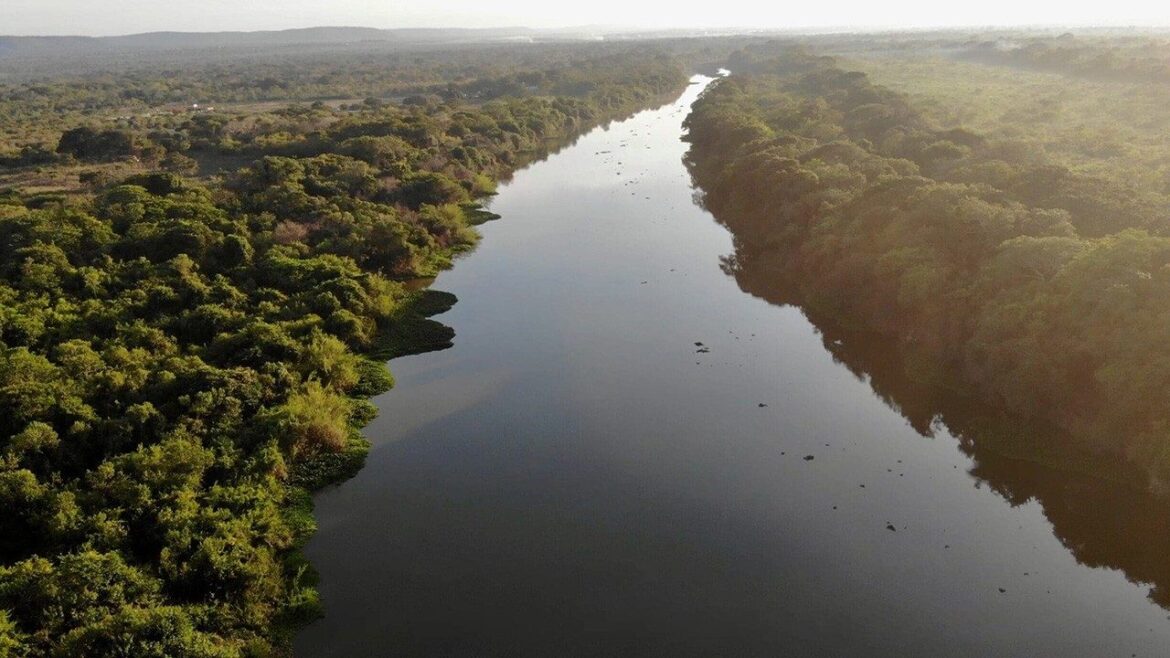The world’s largest tropical rainforest will host its first COP in Belém, Brazil — a symbolic choice highlighting the Amazon’s crucial role in safeguarding global biodiversity and the planet’s climate. Researcher Jhan-Carlo Espinoza of France’s Institute of Research for Development (IRD) and member of the Science Panel for the Amazon, takes stock of the situation.
By Alexandra Sirgant
The Amazon spans nine countries — from the Brazilian rainforest to the Andean highlands of Peru and Bolivia, across Ecuador, Colombia, Venezuela, Guyana, Suriname, and French Guiana. A treasure trove of biodiversity, the Amazon covers 6.9 million square kilometers and is home to more than 34 million people who depend on its natural resources and on the world’s most powerful river for their livelihoods.
It is on the banks of the Amazon River’s mouth, where it meets the Atlantic Ocean — in the heart of Belém, northeastern Brazil — that the 30th Conference of the Parties (COP30) on climate change will take place from November 10 to 21.
In his apostolic exhoration following the Synod on the Amazon, Pope Francis expressed his dream of “an Amazon region that jealously preserves the irresistible natural beauty that adorns it, the teeming life that fills its rivers and forests.”
Yet five years later, the Amazon rainforest continues to edge closer to the “point of no return”, beyond which the effects of deforestation and global warming will become irreversible.
“This is already happening in the southern Amazon Basin,” explains Jhan-Carlo Espinoza, a Franco-Peruvian researcher at the Institute of Research and Development (IRD). “Forests in southern regions — such as in Bolivia’s Amazon — are experiencing increasingly severe and prolonged droughts and are beginning to resemble the Brazilian Cerrado savanna,” he laments, noting that record droughts were recorded in 2023 and 2024. Added to this is the intensification of the hydrological cycle, with extreme floods and major inundations affecting the northern parts of the basin.
Although it is difficult to pinpoint the exact date of this “point of no return,” scientists have identified critical thresholds not to exceed. For deforestation, the tipping point is estimated at 40%.
But “between 17 and 20% of the Amazon forest has already been cleared, equivalent to the combined area of France and Germany,” Espinoza notes. In addition, another 17% has been degraded by human activity. When it comes to global warming, the past two decades have been the hottest on record since the previous century.
Major consequences for the water cycle
This massive deforestation has drastically reduced the carbon-absorption capacity of what is often called the “green lung of the Earth.” But it has also caused devastating impacts on the region’s water cycle.
“Half of the rainfall that falls over the Amazon is returned to the atmosphere by trees through evapotranspiration,” explains Espinoza, who has conducted extensive research on the subject. The Amazon rainforest not only maintains humidity within its own ecosystem but also affects regions far beyond — including the tropical Andes (home to tropical glaciers), the southern parts of the continent, and areas even farther away.
Thus, ongoing deforestation in Brazil plays a critical role in determining current and future water availability in neighboring countries like Bolivia and Peru, ultimately threatening their food security.
Expectations ahead of COP30
Espinoza is a member of the Science Panel for the Amazon, a scientific initiative launched in 2019 that brings together nearly 300 researchers working to synthesize knowledge about the Amazon and develop solutions for its preservation. Among the first key actions proposed to prevent reaching the “point of no return” is the adoption of national policies aimed at achieving zero deforestation.
However, the researcher reminds us that Amazonian deforestation is driven by global market forces — particularly the soy and gold industries — and thus cannot be attributed solely to the responsibility of Amazon countries.
Scientists are also calling for an end to dam construction and other infrastructure projects that disrupt the connectivity between Amazonian forests, rivers, and the Andes. “The Amazon begins in the Andes, at over 5,000 meters above sea level, and that’s where most of the sediments that sustain Amazonian biodiversity originate,” Espinoza explains. H ve also emphasizes the need to protect Indigenous territories and their inhabitants, whose stewardship is crucial for “maintaining the climatic balance between the forest and the atmosphere.”
This final proposal echoes the demands expressed five months ago by Indigenous organizations from across the Amazon Basin, following an international meeting held last June in Brasilia. Beyond calling for greater representation and participation in decision-making within the UN Framework Convention on Climate Change, Indigenous leaders from the nine Amazonian countries are demanding direct access to climate financing — a central issue for the upcoming COP30.



